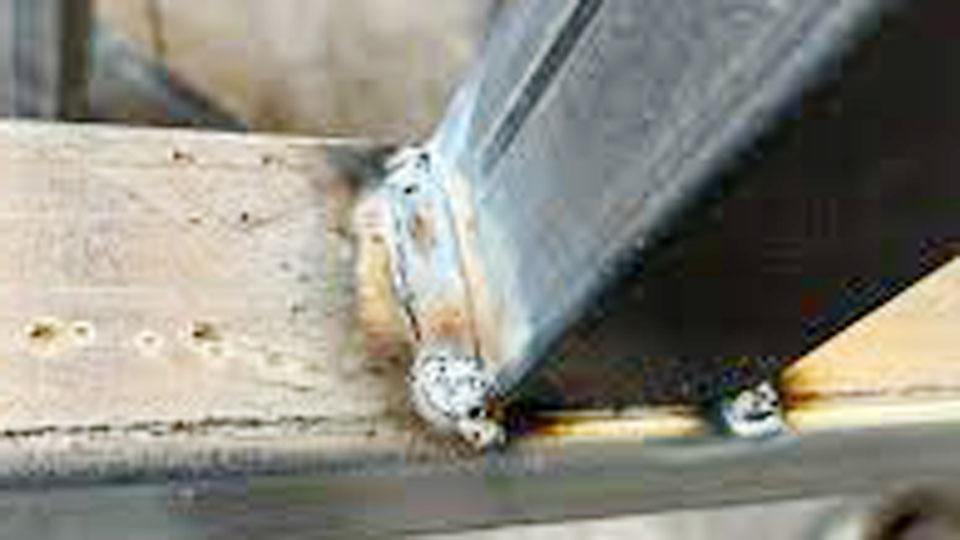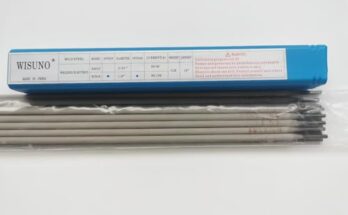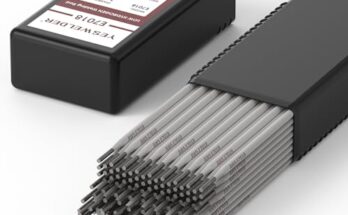Welding galvanized steel with stick welding can be tricky, but with the right techniques, it’s completely doable. If you’ve ever tried welding over galvanized metal, you probably noticed the spatter, poor arc stability, and those nasty zinc fumes. That’s because the zinc coating, while great for rust prevention, creates serious challenges when welding.

Image by reddit
I’ve worked with galvanized steel many times, and I know how frustrating it can be if you don’t approach it the right way. But don’t worry—I’ll walk you through everything, from preparation to safety, so you can get strong, clean welds while keeping yourself safe.
Challenges of Welding Galvanized Steel
Before you strike an arc, it’s important to understand the challenges of welding galvanized steel.
- Zinc Fumes Are Toxic – When heated, the zinc coating burns off, releasing zinc oxide fumes. These fumes can cause metal fume fever, which feels like a bad case of the flu.
- Porous Welds – The zinc layer can cause contaminated and porous welds, which weakens the joint.
- Increased Spatter – Stick welding already produces spatter, but zinc makes it worse.
- Cracking and Brittleness – Welds on galvanized steel are more prone to cracking and brittleness if not done correctly.
Now that we know the challenges, let’s go step by step to safely and effectively weld galvanized steel using stick welding.
Preparing Galvanized Steel for Stick Welding
The first step in getting a good weld is proper preparation. You can’t just weld over galvanized steel and expect a perfect result.
Remove the Zinc Coating
The best way to avoid zinc contamination is to remove the coating from the weld area. There are three main ways to do this:
- Grinding – Use a grinder, wire wheel, or flap disc to grind off 1-2 inches around the weld joint.
- Chemical Stripping – Use muriatic acid or vinegar to dissolve the zinc. Apply it, let it sit for a few minutes, then rinse it off thoroughly.
- Sandblasting – Great for large projects, sandblasting removes the zinc evenly.
Once the zinc is removed, wipe the area with acetone to remove any residue.
Secure the Workpiece
Clamp the workpiece down so it doesn’t move while welding. If possible, position it so that fumes escape easily, keeping them away from your breathing zone.
Choosing the Right Stick Welding Electrode
The type of electrode you use makes a huge difference when welding galvanized steel. Some rods work better than others.
Best Electrodes for Welding Galvanized Steel
| Electrode | Best For | Pros | Cons |
|---|---|---|---|
| E6010 | Deep penetration, dirty metal | Cuts through zinc well | Requires skill, rough welds |
| E6011 | Outdoor welding, thick steel | Good penetration, handles zinc | More spatter |
| E6013 | General welding, thinner steel | Smooth welds, easy to use | Less penetration |
I usually prefer E6011 because it burns through contaminants well and works in all positions. E6013 is another good choice if you want a cleaner weld with less penetration.
Setting Up Your Stick Welder for Galvanized Steel
Getting the right settings is important for avoiding excessive spatter and porosity. Here’s a guide to help you dial in the right setup:
Recommended Stick Welding Settings
- Polarity: Use DC+ (DCEP) for better penetration
- Amperage: Depends on electrode size
- E6011 (1/8″) – 90-120 Amps
- E6013 (1/8″) – 80-110 Amps
- Arc Length: Keep it short (about the thickness of the electrode)
- Travel Speed: Use a steady, medium pace to avoid overheating
Step-by-Step Guide to Stick Welding Galvanized Steel
Now that everything is set up, let’s go through the actual welding process.
Strike the Arc and Maintain a Short Arc Length
Stick welding works best when you keep the arc short. If the arc is too long, it’ll cause more spatter and make the weld weak. A short arc helps control the heat and penetration.
Use Stringer Beads Instead of Weaving
For galvanized steel, it’s better to use stringer beads (straight weld passes) rather than weaving. Weaving creates too much heat, which burns off more zinc and makes the weld brittle.
Control Your Travel Speed
Move at a steady speed. If you go too fast, you won’t get good penetration. Too slow, and you’ll overheat the metal, causing excessive zinc vaporization.
Weld in a Well-Ventilated Area
Always work in a well-ventilated space or use a fume extractor. If possible, weld outdoors or with a fan positioned to push the fumes away from your face.
Take Breaks to Let Fumes Clear
If you start feeling dizzy, nauseous, or lightheaded, stop immediately. Get fresh air and let the fumes clear before continuing.
Post-Weld Cleaning and Finishing
Once you’ve finished welding, there are a few more steps to ensure your weld lasts.
Clean the Weld
Use a wire brush or grinder to remove any slag, spatter, and remaining zinc residue.
Apply a Protective Coating
Since you removed the zinc coating, the welded area is now unprotected from rust. You can:
- Spray cold galvanizing compound to restore corrosion resistance
- Paint over the weld with rust-resistant paint
Common Welding Issues and How to Fix Them
Even with the right setup, you might run into some common problems. Here’s how to troubleshoot them:
| Problem | Cause | Solution |
|---|---|---|
| Porous welds | Zinc contamination | Grind off more zinc before welding |
| Excessive spatter | Too much heat or improper settings | Lower amperage and adjust travel speed |
| Cracking in welds | Brittle welds due to zinc | Use proper electrode (E6011 or E6013) |
| Weak welds | Poor penetration | Increase amperage or slow travel speed |
Safety Tips for Welding Galvanized Steel
Welding galvanized steel requires extra safety precautions. Here’s what you need to do:
- Wear a respirator – Use a P100-rated mask to protect against zinc fumes.
- Use proper ventilation – Work outside or use fume extraction fans.
- Wear protective gear – Use gloves, a welding jacket, and long sleeves to prevent skin irritation from fumes.
- Avoid breathing in fumes – Always position yourself so the fumes drift away from your face.
- Stay hydrated – Drink plenty of water to help flush out any toxins if you’ve been exposed to fumes.
Conclusion
Stick welding galvanized steel isn’t difficult if you prepare the metal properly, choose the right electrode, and follow safe welding practices. The biggest challenge is dealing with the zinc coating, but once you grind it off and use proper ventilation, you’ll get strong, clean welds without risking your health.
If you take your time and follow these steps, you’ll have no trouble welding galvanized steel with stick welding. And trust me, once you get the hang of it, you’ll be able to tackle any galvanized project with confidence.
Frequently Asked Questions
Can you weld galvanized steel without removing the zinc coating?
Yes, but it’s not recommended. The weld will be weaker, and the fumes are dangerous.
What is the best stick welding rod for galvanized steel?
E6011 works best because it penetrates through the zinc coating, but E6013 can be used for cleaner welds.
Do I need to wear a respirator when welding galvanized steel?
Yes, always wear a P100-rated respirator to protect yourself from toxic zinc fumes.
How do you prevent weld cracking on galvanized steel?
Remove the zinc coating, use the right electrode, and avoid overheating the metal.







